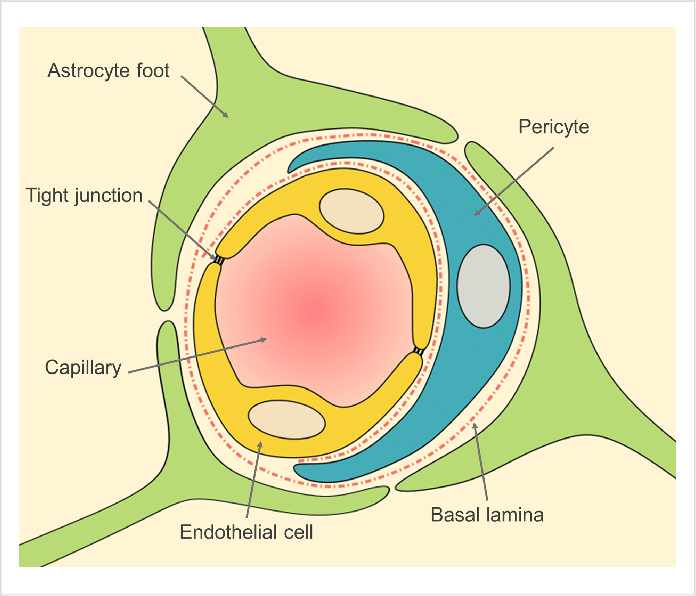Blood–Brain Barrier, Drug Transportation
Blood–Brain Barrier, drug transportation:
The blood–brain barrier (BBB) is an anatomical and functional barrier between the circulation and the central nervous system. Active transport and facilitated diffusion are the predominant methods of molecular transfer, which in health is tightly controlled.
Glucose and hormones, such as insulin, cross by active carrier transport, while only lipid-soluble, low molecular weight drugs can cross by simple diffusion.
Thus inhaled and intravenous anaesthetics can cross readily whereas the larger, polar muscle relaxants cannot and have no central effect.
Similarly, glycopyrrolate has a quaternary, charged nitrogen and does not cross the BBB readily. This is in contrast to atropine, a tertiary amine, which may cause centrally mediated effects such as confusion or paradoxical bradycardia. The presence of ABC transport proteins protect the brain from toxins as well as certain antibiotics and cytotoxics. As well as providing an anatomical barrier, the BBB contains enzymes such as monoamine oxidase. Therefore, monoamines are converted to non-active metabolites by passing through the BBB.
Physical disruption of the BBB may lead to central neurotransmitters being released into the systemic circulation and may help explain the marked circulatory disturbance seen with head injury and subarachnoid haemorrhage. In the healthy subject penicillin penetrates the BBB poorly. However, in meningitis, the nature of the BBB alters as it becomes inflamed, and permeability to penicillin (and other drugs) increases, so allowing therapeutic access.



